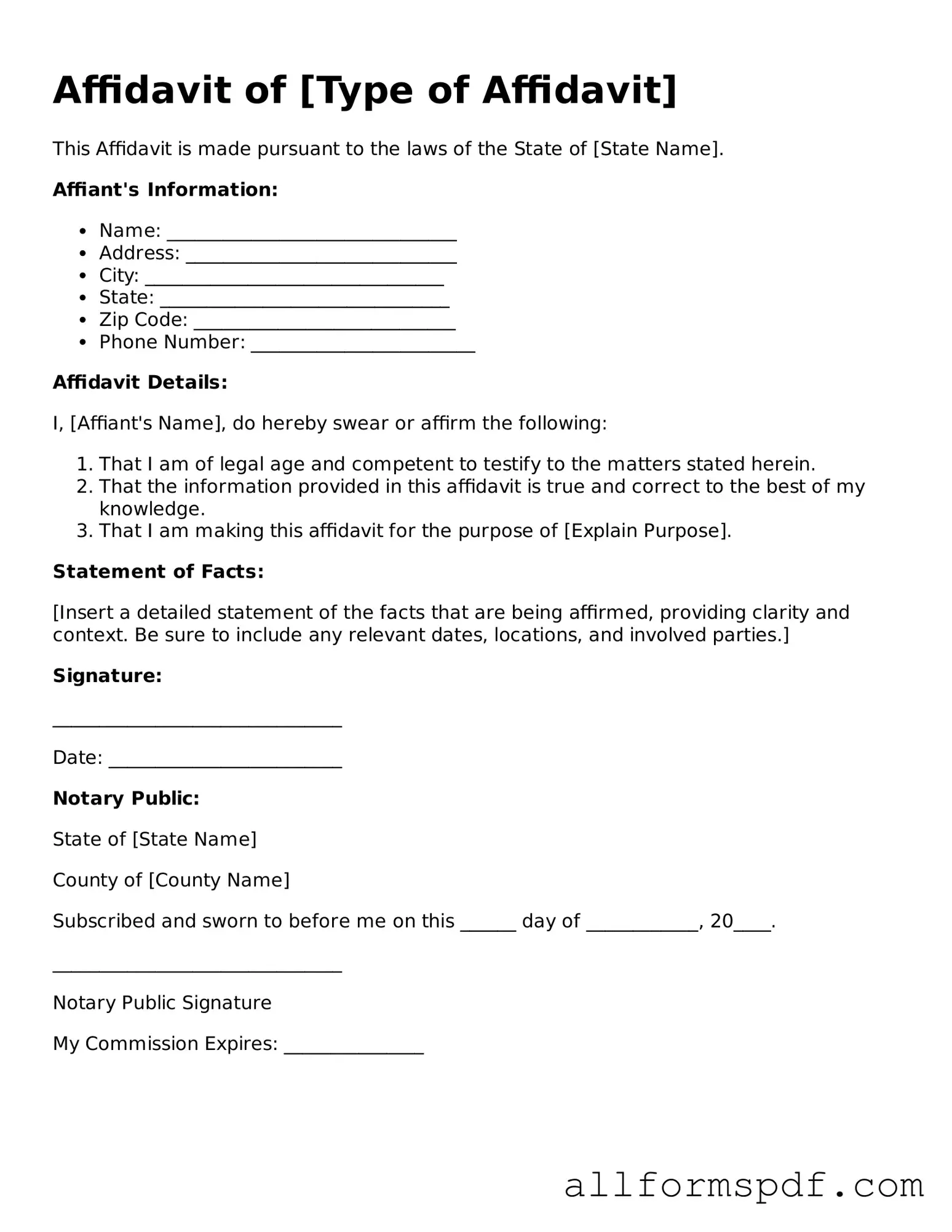Filling out an Affidavit form can seem straightforward, but many people make common mistakes that can lead to complications. One frequent error is leaving out essential information. An Affidavit needs to be clear and complete. Omitting key details, such as your name, address, or the facts you are attesting to, can render the document ineffective.
Another mistake involves using vague language. Affidavits require precise wording. If you use ambiguous terms or phrases, it can create confusion about your statements. Clarity is crucial, so ensure that your assertions are specific and easily understood.
Many individuals also forget to date their Affidavit. A date is vital because it establishes when the document was created and can impact its validity. Without a date, the Affidavit may be questioned or deemed incomplete.
Signature errors are another common pitfall. Some people neglect to sign the Affidavit in the correct place or fail to have it notarized. A signature is a declaration of truth, and notarization adds an extra layer of authenticity. Skipping these steps can lead to significant issues down the line.
Additionally, failing to provide adequate identification can be problematic. Many jurisdictions require you to include a form of ID or reference your identification details in the Affidavit. Without this information, the document may not be accepted by the court or other authorities.
Lastly, individuals sometimes underestimate the importance of reviewing their Affidavit before submission. Taking the time to proofread can catch errors or omissions that could have serious consequences. A careful review ensures that your Affidavit accurately reflects your intentions and complies with legal standards.
